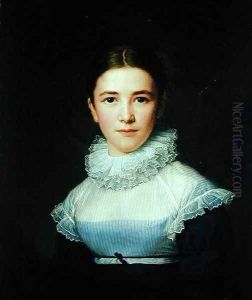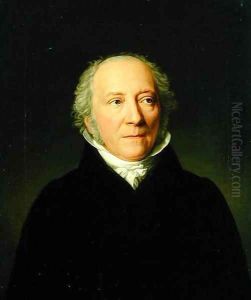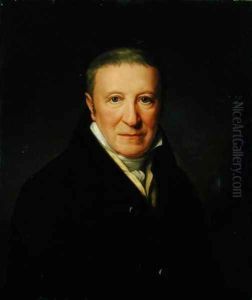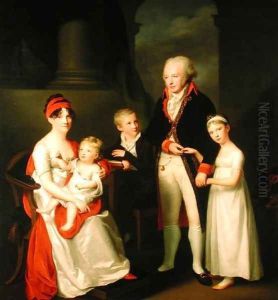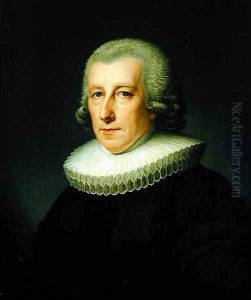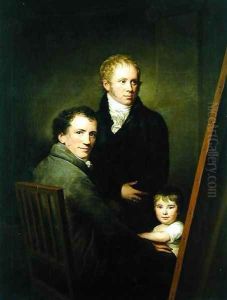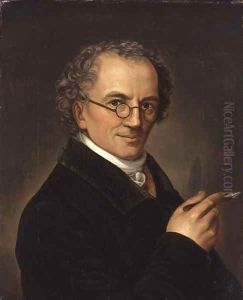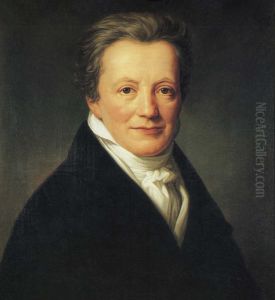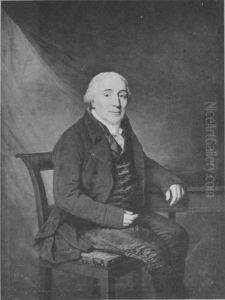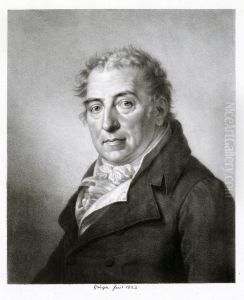Friedrich Carl Groger Paintings
Friedrich Carl Groger was a German portrait painter born on October 14, 1766, in Plön, in the Duchy of Holstein, which at the time was part of the Holy Roman Empire. He displayed an early talent for art, which led to him receiving his initial education in painting from Jes Bundsen. In 1789, he went to Hamburg to continue his education with Johann Jacob Tischbein, a well-respected portraitist of the time.
Groger quickly developed a reputation as a skilled portraitist, particularly known for his miniatures. In 1792, he furthered his studies and experience in St. Petersburg, Russia. Upon his return to Northern Germany, he settled in Lübeck, where he became a sought-after portrait painter among the bourgeoisie, clergy, and aristocracy. He was known for his ability to capture the likeness and character of his sitters with great accuracy and detail, often painting them in their homes surrounded by items signifying their professions or interests.
In 1814, he was appointed a court painter in Schleswig-Holstein. Throughout his career, he traveled extensively in Northern Germany, painting portraits of notable figures of the time, including members of the Danish royal family. Groger was also a member of the Hamburg Art Association and contributed significantly to the cultural life of the region.
Friedrich Carl Groger's work provides an important visual record of the social and cultural life of Northern Germany during his lifetime. His portraits are characterized by their clarity, realistic representation, and subtle coloring. He died on November 30, 1838, in Lübeck, leaving behind a legacy of being one of the most important portrait painters in Northern Germany during the early 19th century.
